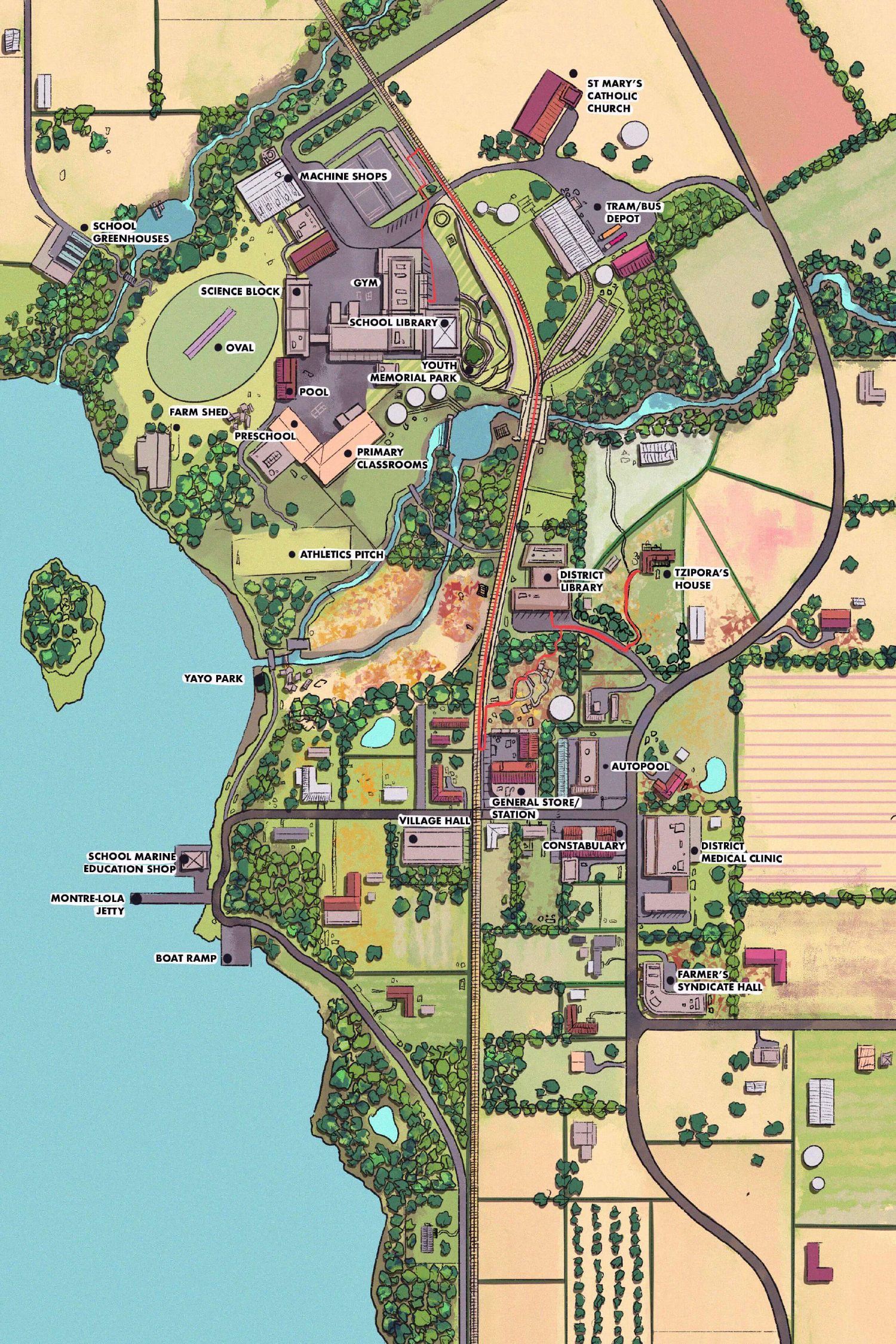NEW Story: Sunday Morning
Village Map of Montre-Lola

✿ This article was featured in Issue #2 of the Atlantic Bulletin
The village of Montre-Lola is home to about 400 people in its entirety, a stone’s throw from the Aisyo borough. Each morning, however, the population swells as 300 children from tiny villages in both Aisyo and Montre take a fast tram to the Montre-Lola Area School No. 2, a district school raising all ages of local youth.
Like many Vekllei villages, Montre-Lola’s history is complex and has origin stories in both viking-inuit settlement as well as less sentimental government programmes that flourished after the atomic war. By historical accounts, Montre-Lola has been inhabited since at least 1500CE. By contemporaneous records, however, it was established as a village in land reform during the 1960s and revitalised by the building of the area school in 2057.
Montre-Lola features many civic objects common to Vekllei villages — a nondenominational place of worship (in this case, a historical Catholic church), a constabulary, a doctor, an auto/tractor pool, a general store, a station platform, and a village hall. A map of the village centre is dominated by the Area School, built in an Edunewda style, which features many new facilities that distinguish it from smaller, 20th-century schools. It’s a good place to grow up; where farmland and earnest modernity collide.
Montre-Lola is most relevant as the residence of Tzipora Desmoisnes, the world’s oldest person and one of the first people to be diagnosed with Gregori-Heitzfeld Syndrome. She works as a librarian in both the Montre-Lola Area School and the Montre-Lola Library & Archives, spending most of her 12-hour workday in either of these institutions. She commutes via fast trams, which arrive automatically at the two platforms in Montre-Lola every half-hour and continue out into the surrounding farms. This means that, if she sets her watch right, she can step outside her front door and arrive at the school library in under ten minutes. This journey is marked in red on the map above.
Dominated by farmland, Montre-Lola is communal and more traditionally ‘anarchist’ in flavour than Vekllei’s urban boroughs, which are obscured by convenience. As charming as it is suffocating, the community is very close-knit and made up of all sorts — smart educated young men and women sent from Montre to teach, as well as farming families that have resided here for centuries. Life moves slower and people know each other. When the school hosts its cross-country race each year, nearly every person in the village is out to watch it. After all, it takes a village to raise a child.